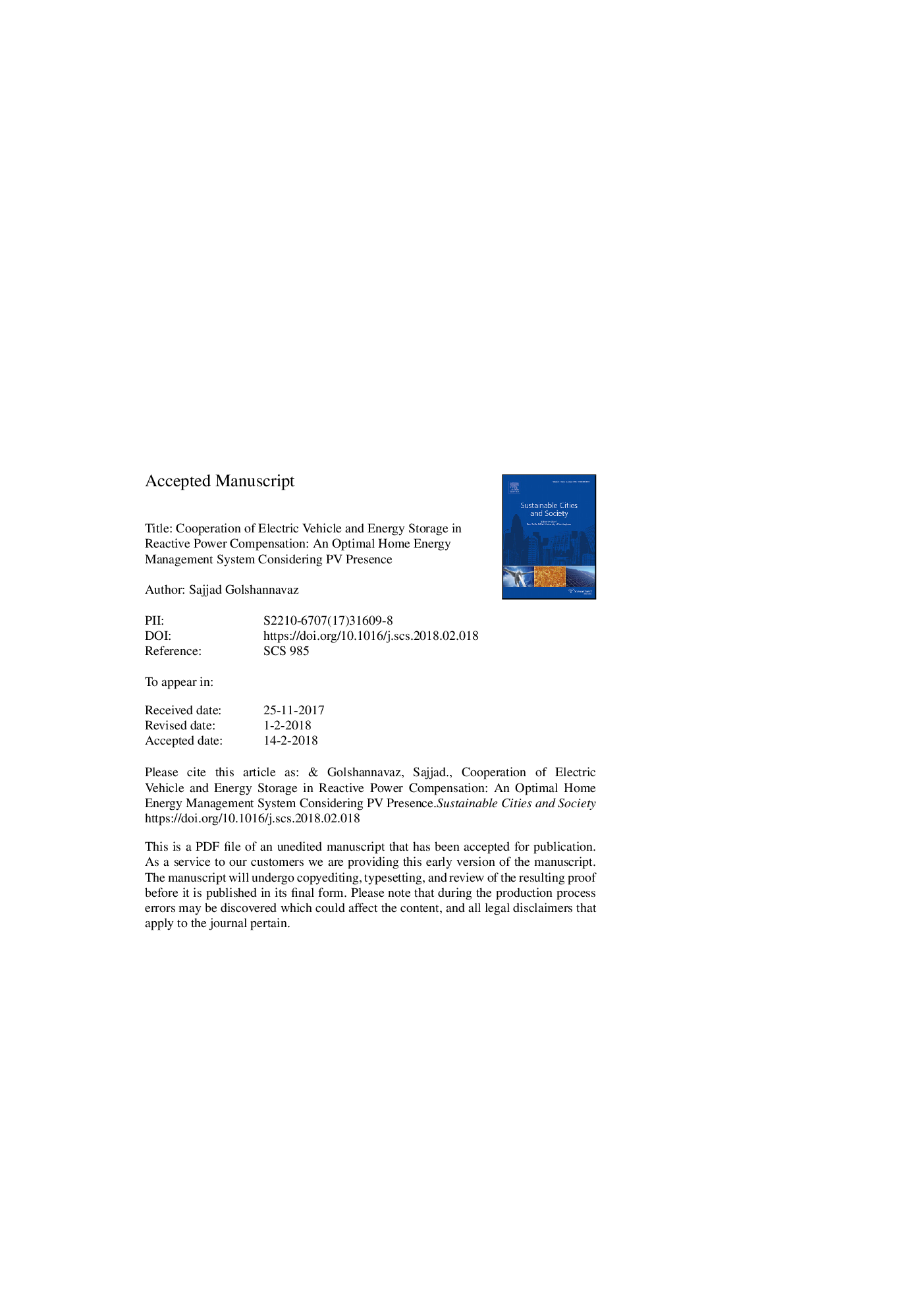| Article ID | Journal | Published Year | Pages | File Type |
|---|---|---|---|---|
| 6775244 | Sustainable Cities and Society | 2018 | 30 Pages |
Abstract
This paper proposes a home energy management (HEM) strategy to not only reduce the customer's billing cost but also to compensate the reactive power at the point of grid integration. The developed HEM enables the home owner to manage different components and appliances including electric vehicle (EV), energy storage system (ESS), and shiftable loads (SLs). Optimal scheduling of consumption times of SLs and charging/discharging cycles of EV and ESS ends in sensible reduction in daily operation cost. Then, satisfying the obtained minimum operation cost within the constraints, the remaining capacity of EV and ESS inverters is dedicated to reactive power compensation of the home appliances. Accordingly, the power factor (PF) of home-to-grid connection is sensibly improved. The proposed HEM is modeled as a mixed-integer linear programming (MILP) and is solved with general algebraic modeling system (GAMS). The obtained results approve both the economic and technical successes.
Related Topics
Physical Sciences and Engineering
Energy
Renewable Energy, Sustainability and the Environment
Authors
Sajjad Golshannavaz,
